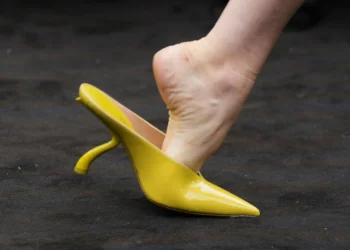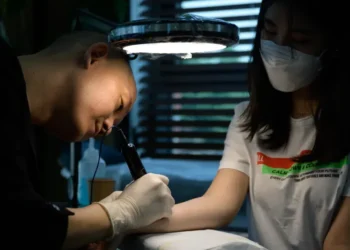Japan’s hot springs, known as onsen, are an integral part of the nation’s culture, offering relaxation, social connection, and wellness benefits. For first-time international visitors, understanding the history, customs, and etiquette can transform the experience from intimidating to enriching. This guide provides insights for navigating these communal baths with confidence.
Experiencing the Onsen for the First Time
A visit to a Japanese onsen can be a striking departure from Western bathing practices. Many travelers report initial anxiety about communal nudity, especially in private or outdoor hot spring pools. Yet, for locals, bathing naked in these mineral-rich waters is an everyday activity, steeped in centuries of tradition.
Geothermally heated, onsen water is rich in minerals and historically associated with purification rituals. References to these baths appear as early as the 8th century in the Kojiki, one of Japan’s oldest historical texts. Originally reserved for the elite, onsen evolved during the Edo period (1603–1868) into social hubs, similar in function to Roman baths. Today, Japan hosts over 3,000 onsen, ranging from local town facilities to large resort complexes, all regulated to maintain safe water temperatures between 34°C and 42°C (93–107°F), ensuring both comfort and hygiene.
Understanding the Difference: Onsen vs. Sentō
Travelers often confuse onsen with sentō, but there are notable differences. While onsen rely on naturally heated geothermal water, sentō are urban bathhouses that use heated tap water. Sentō historically served communities without private bathrooms, providing a vital public service. Both require full nudity, but their cultural contexts differ.
Bathhouse expert Stephanie Crohin, originally from France, explains that the initial discomfort is common among first-time visitors. “At first, I was shy about undressing in front of strangers,” she recalls. “But everyone else was simply focused on washing or relaxing, and soon I did too.”
Cultural Etiquette in Japanese Bathhouses
Onsen and sentō operate under a clear set of social conventions, designed to ensure a clean, respectful environment. Key guidelines include:
-
Undressing fully in designated changing areas before entering baths.
-
Thoroughly washing and rinsing at shower stations before soaking.
-
Keeping towels out of the water and using small towels only for modesty outside the bath.
-
Maintaining quiet and respectful behavior, including avoiding splashing or loud conversations.
-
Tying up long hair to prevent it from entering the bath.
Tattoos, historically associated with organized crime, were often prohibited. However, many resorts, including Hoshino Resorts, now allow tattoos in the spirit of cultural inclusivity. Visitors should check local rules in advance but can generally expect a welcoming atmosphere.
Tips for First-Time Visitors
Navigating your first onsen or sentō visit can be simplified with a few practical steps:
-
Remove shoes at the entrance and place them in a locker.
-
Pay the entry fee, with optional charges for saunas.
-
Bring a small towel into the bath area.
-
Wash thoroughly at the shower stations before entering the baths.
-
Rinse off soap completely and avoid placing towels in the water.
-
Follow local cues if signage is unclear — observation is often sufficient.
Crohin emphasizes that the experience is as much cultural as it is recreational. “It’s normal to feel hesitant at first,” she says. “But the focus in these spaces is on relaxation, not judgment.”
Soaking Amid Snow and Silence
For many visitors, the serene environment becomes the highlight. Under snowy skies in Hokkaido or Nagano, the contrast of cold air and steaming water enhances relaxation. Bathers often sit among friends, families, or strangers, sharing quiet conversation or simply enjoying the therapeutic warmth. This atmosphere fosters a unique sense of community and personal reflection.
Health and Wellness Benefits
Onsen are more than cultural experiences; they are recognized for health benefits. Soaking in mineral-rich water can improve circulation, relieve muscle tension, and support skin health. Roten-buro, or outdoor baths, allow visitors to enjoy natural surroundings, combining physical relaxation with mental well-being.
The Takeaway for International Travelers
First-time bathhouse visitors can approach the experience with openness and curiosity. By following simple etiquette, respecting local customs, and observing other bathers, the initial discomfort quickly fades. Many leave with a sense of freedom, acceptance, and appreciation for a longstanding cultural tradition.
Hoshino Resorts, a chain originating as a family-run ryōkan in 1914, encourages international guests not to worry about nudity or etiquette. “Japanese people are not focused on others’ bodies,” says resort representative Chanel Cai. “The hot spring experience is about your own moment of relaxation.”
Visiting an onsen or sentō can be transformative. Beyond the physical warmth, it offers a window into Japanese social culture, an appreciation for mindful living, and a rare environment where body image concerns recede into the background.
▶ Stay informed with JournosNews.com — your trusted source for verified global reporting and in-depth analysis. Follow us on Google News and BlueSky for real-time updates.
Source: CNN – Yes, you have to get completely naked: What it’s really like to visit a Japanese hot spring

















